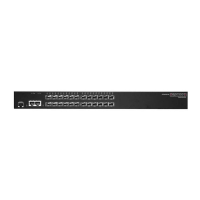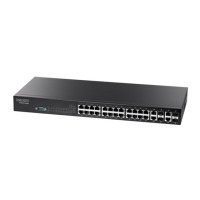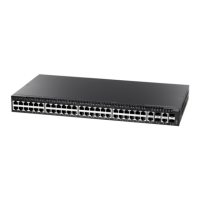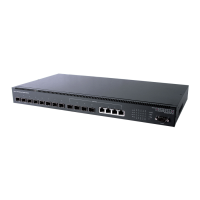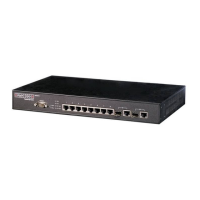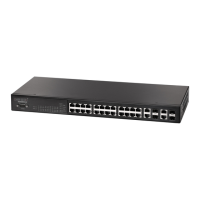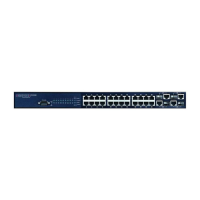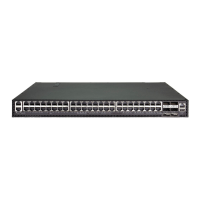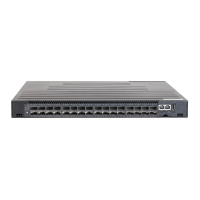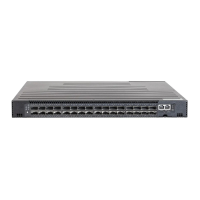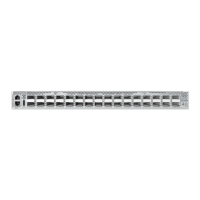Chapter 10
| Interface Commands
Interface Configuration
– 351 –
Command Usage
This command allows you to disable a port due to abnormal behavior
(e.g., excessive collisions), and then re-enable it after the problem has been
resolved. You may also want to disable a port for security reasons.
Example
The following example disables port 5.
Console(config)#interface ethernet 1/5
Console(config-if)#shutdown
Console(config-if)#
speed-duplex This command configures the speed and duplex mode of a given interface when
auto-negotiation is disabled. Use the no form to restore the default.
Syntax
speed-duplex {1000full | 100full | 100half | 10full | 10half }
no speed-duplex
1000full - Forces 1000 Mbps full-duplex operation
100full - Forces 100 Mbps full-duplex operation
100half - Forces 100 Mbps half-duplex operation
10full - Forces 10 Mbps full-duplex operation
10half - Forces 10 Mbps half-duplex operation
Default Setting
◆ Auto-negotiation is enabled by default.
◆ When auto-negotiation is disabled, the default speed-duplex setting is 100full
for 1000BASE-T ports.
Command Mode
Interface Configuration (Ethernet, Port Channel)
Command Usage
◆ The 1000BASE-T standard does not support forced mode. Auto-negotiation
should always be used to establish a connection over any 1000BASE-T port or
trunk. If not used, the success of the link process cannot be guaranteed when
connecting to other types of switches.
◆ To force operation to the speed and duplex mode specified in a speed-duplex
command, use the no negotiation command to disable auto-negotiation on
the selected interface.
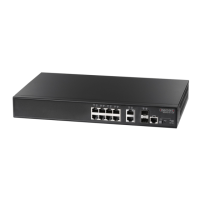
